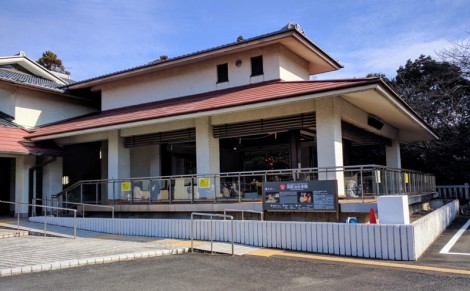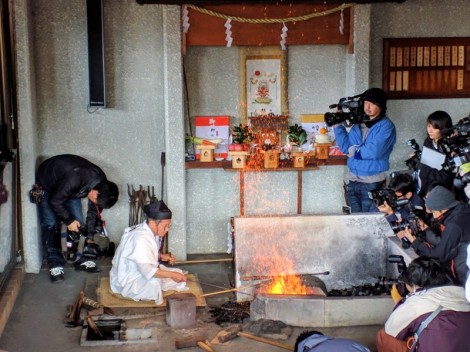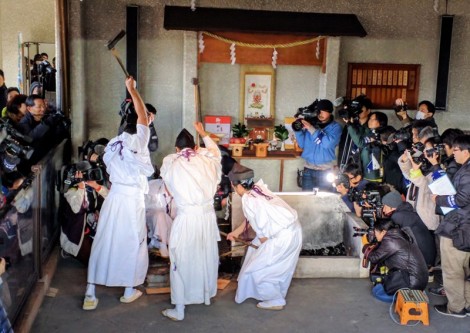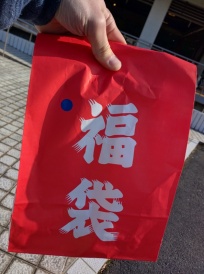***Article edited June 2018 to account for museum renovations and changes to demonstrations that took place in April, 2018.
It was a sunny, brisk Sunday morning when I arrived in Seki City to see the Uchizome-shiki, or first sword-forging ceremony of the year. This is a tradition that takes place every year on January 2nd at the Seki Traditional Swordsmith Museum. For those who don’t know about Seki City, it is known as the sword capital of Japan because the craft has been handed down from generation to generation for over 700 years. During the Warring States period of Japan, or Sengoku-jidai, it was said that Seki swords were “unbreakable, unbendable, and extremely sharp,” and were favored by many military commanders at the time. It is for this reason that even today Seki City attracts many sword, cutlery, and history enthusiasts from all over Japan and the world. Anyways, back to the Uchizome-shiki…
The ceremony started at 10:00am but I arrived at 9:20-ish to make sure that I could get a spot. When I arrived at the museum there was a line of people waiting to receive fukubukuro gift-bag tickets. Since they were free I decided to wait and get a ticket, which were to be traded in after the ceremony for a fukubukuro gift bag. Fukubukuro gift-bags are a Japanese New Year tradition where a store will place some mystery items in a bag and sell it at a discounted price (the fun part being you won’t know what you get until you open it). If you are lucky you might get an item worth substantially more than the price you paid.
After receiving a ticket I continued to the blacksmithing area located just next to the entrance of the museum. I would recommend arriving at least a half-hour early if you want to get a decent spot because space is limited (especially because news reporters and cameramen take up about one-third of the spectator space).
The ceremony began with a Shinto ritual involving prayer chants. Through prayer they asked for a safe and prosperous year for the people involved in the production of Seki’s various industries. In attendance for this portion of the ceremony were both the toushou swordsmiths (garbed in white), and local officials. When the praying ended, the officials cleared the blacksmithing area and the forging began. There were a total of two blacksmithing sessions where three blacksmiths provided the heavy-duty pounding, and a fourth one held the glowing-hot steel in place. This last blacksmith would also provide periodical hammering in order to keep control of how the steel was bending. I can still hear the rhythmic pounding of the hammers in my head as I am writing this right now.
After the first initial forging there was a 10 to 15 minute break before the next session started in order to allow the steel to reheat. Most of the original spectators left at this time, so if there was anyone who arrived a little too late to get a spot for the ceremony then they were able grab one at this time and watch the second session.
This is when I decided to go wait in line and collect my fukubukuro gift bag. There were people in front of me who were receiving some high-quality cutlery and pocket knives, so the suspense was starting to kill me! After all was said and done I ended up getting hair clippers, scissors, a bottle-opener, a silverware knife, and some cough-drops. While I didn’t get a pocket knife I was still very satisfied with my winnings, especially after considering that they were all provided by local Seki businesses. Afterwards, I decided to take some time and wander around the inside of the museum.
In the museum you can learn about the history of Seki swords in Japan, see the process of how they are made, and view famous ones that are displayed on the second floor. The amount of time and effort it takes to create a single sword (and the number of people that partake in the process) is truly amazing. Now I can see why Seki swords were popular among the samurai in the past, and why they remain so famous to this day.
For more information about the Seki Traditional Swordsmith Museum please see the following link:
http://travel.kankou-gifu.jp/en/see-and-do/16/
If you couldn’t make the Uchizome-shiki ceremony but would still like to see the katana blacksmithing in person then please see below for updated information*:
Standard Public Demonstrations (Viewing Fee Required)
+First Sunday of each month (except January and October) at 10:00 am, 1:30 pm
+Adult: ¥300, High School Student: ¥200, Elementary & Middle School Student: ¥100
+Entry into the museum will require a separate admission fee (same prices as above)
Special Demonstrations (Free)
+Uchizome-shiki Ceremony (January 2nd) at 10:00am
+Hamono Festival (Sat. and Sun. before Health-Sports Day in Oct.) at 10:30am, 1:30pm, and 3:00pm
+Entry into museum is free on these days
*times and days subject to change






